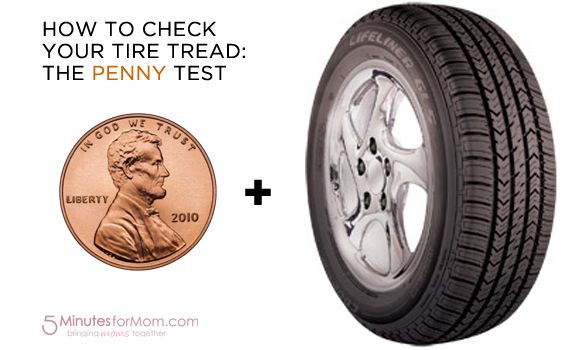Calculate Out-The-Door Price
close
Tires
When your tire treads wear thin, you could be in for a slippery ride—literally. Luckily, you can spot dangerous tread depth using only a penny, and Honest Abe’s face! The penny test is quick, easy, and can help you know exactly when to replace tires.
To check your tread depth, you don’t need any fancy tools or expert knowledge. Grab a penny, and you have everything you need!
For reference, the distance between the top of a penny and Abe’s head is about 2/32nd of an inch. If you can see the top of his head, your tread is less than 2/32nd of an inch and your safety may be at risk. Depending on where you live, continuing to drive on such thin tread could actually be against the law.
"Most states require a minimum of 2/32 of an inch (approximately 1.6 mm) of tread, but two require less, some have no requirements, and some defer to the federal criterion for commercial vehicle safety inspections," reports the National Center for Biotechnology Information.
With adequate tire tread depth, your car is able to grip the road. This is especially important when roads are snowy or wet, or when you’re driving on less-than-ideal surfaces. Once tread becomes shallow, your tires are more prone to slipping and sliding, creating a dangerous situation for yourself and other drivers on the road.
Once tread becomes shallow, your tires are more prone to slipping and sliding, creating a dangerous situation for yourself and other drivers on the road.
When your tires are worn, other components of your vehicle can begin to wear prematurely, too, as your vehicle experiences excess strain. While new tires can be a big investment, they’re an investment worth making.
Reach into your pocket and pull out your spare change. Give the penny test a try—it only takes a few minutes—and find out if it's the right time to replace your tires. If you're short on change, just find your nearest Firestone Complete Auto Care. Our stores offer free tire inspections that include tire tread depth measurement!
Schedule
Tires
Aug 22, 2016
Tread wear, your tires exposure to the elements, and tire age may all be contributing factors to your needing new tires. Read on to learn how to tell.
Read on to learn how to tell.
Read More
Tires
Aug 22, 2016
Firestone tires create a whole new driving experience. Learn about the technology of our tires that improves driving on straightaways and handling ability.
Read More
Tires
Aug 22, 2016
Tires are an investment & you want them to last. Here are some tire care tips to help you get the most out of your tires & info on our free inspection
Read More
LOAD 3 MORE
SHOWING 6 OF 12
Tires
Jan 14, 2018
Wondering how to choose tires? Let us simplify the process into a handful of easy-to-follow steps, from Firestone Complete Auto Care.
Read More
Tires
Jan 10, 2018
Do you need to switch all of your tires to winter tires, or will two do just fine? Get the answer, from the tire pros at Firestone Complete Auto Care!
Read More
Tires
Nov 30, 2017
Your tire wear patterns are talking. Are you interpreting? Check out images of common tire wear patterns from Firestone Complete Auto Care to learn how!
Read More
{{storeNumber}}
{{storeName}}
{{link-icon "Call Us" mobileCallLink null "call-cta"}} {{link-icon "Directions" directions "_blank" "directions-cta"}}
{{address}}
{{city}}, {{state}} {{zip}}
{{#if activeFlag}} {{#ifCond mystore "or" myPreferredStore}} {{#ifCond storeType 'eq' "TPL"}}
*Call store for appointment {{phone}}
{{else}} {{#if onlineAppointmentActiveFlag }}
{{#if myPreferredStore}}
{{else}}
*Call store for appointment {{phone}}
{{/if}} {{/ifCond}} {{else}} {{#ifCond storeType 'eq' "TPL"}}
*Call store for appointment {{phone}}
{{else}}
Schedule Appointment {{#if onlineAppointmentActiveFlag}} {{else}}
*Call store for appointment {{phone}}
{{/if}}
{{/ifCond}} {{/ifCond}} {{else}}
*Temporarily Closed Due To: {{temporarilyClosedReason}}
{{/if}} {{#if isMilitaryStore}}
*This location is on an active US military base. You may need military ID to access the location.
You may need military ID to access the location.
{{/if}}
{{#ifCond count 'eq' "3"}} Show More Stores {{/ifCond}}
When it comes to checking tire tread, there are a number of methods that can help you know if it’s time to replace a tire. Heavily worn tread will prevent a tire from performing as designed and can lead to unsafe driving conditions. One of the simplest, most common ways to check tread depth requires nothing more than a penny and a few moments of your time.
In the United States, tire tread depth is measured in 32nds of an inch. New tires typically come with 10/32” or 11/32” tread depths, and some truck, SUV and winter tires may have deeper tread depths than other models. The U.S. Department of Transportation recommends replacing tires when they reach 2/32”, and many states legally require tires to be replaced at this depth.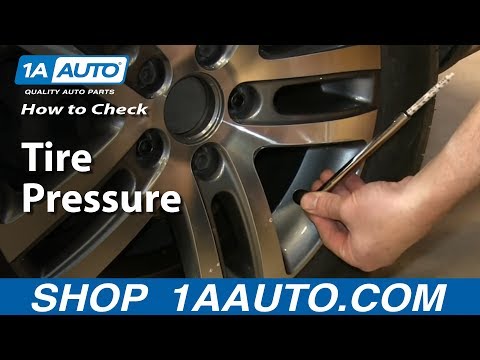
The idea of the penny test is to check whether you’ve hit the 2/32” threshold. Here’s how it works:
Place a penny between the tread ribs on your tire. A “rib” refers to the raised portion of tread that spans the circumference of your tire. Tire tread is composed of several ribs.
Turn the penny so that Lincoln’s head points down into the tread.
See if the top of his head disappears between the ribs. If it does, your tread is still above 2/32” , If you can see his entire head, it may be time to replace the tire because your tread is no longer deep enough.
When performing the penny tire test, remember not only to check each tire, but to check various places around each tire. Pay special attention to areas that look the most worn. Even if parts of your tread are deeper than 2/32”, you should still replace the tire when any areas fail the penny test.
Consistent wear around the whole tire is normal, but uneven tread wear could be a sign of improper inflation, wheel misalignment, or a variety of other things. If you see uneven tread wear, you should have a technician inspect your vehicle.
If you see uneven tread wear, you should have a technician inspect your vehicle.
A simple way to check your tire tread depth is by using a tread depth gauge. You can find tire tread depth gauges at your local auto parts store. There are many models available, but an inexpensive simple graduated probe gauge will work just fine. All you have to do is stick the probe into a groove in the tread and press the shoulders of the probe flat against the tread block and read the result. All gauges should measure in both 32nds of an inch and millimeters.
Another indicator of worn out tread already lives in your tires themselves. Every performance, light truck, or medium commercial tire comes equipped with indicator bars (or wear bars) embedded between the tread ribs at 2/32”. They’re there to help you monitor tread depth and make decisions about tire replacement. Just look to see if the tread is flush with the indicator bars. If they are, it’s time to replace the tire.
If they are, it’s time to replace the tire.
While the penny tire test does deliver on what it promises – indicating whether tread has reached the legal limit – it may not be the best indicator of whether your tires are safe for the road. Tire performance can diminish significantly before your tread hits 2/32”. Even though the law deems fit for safe driving may not prevent you from hydroplaning or losing control in rainy, slushy conditions. If you think your tires may be close to needing replacement, have them checked out by a licensed mechanic.
Tire pressure significantly affects driving parameters: comfort, car handling, economy and safety. It is important to maintain the pressure recommended by the manufacturer and check it regularly. Let's figure out how to do it right.
When driving on asphalt, incorrect tire pressure (both high and low) leads to a decrease in the contact patch with the road.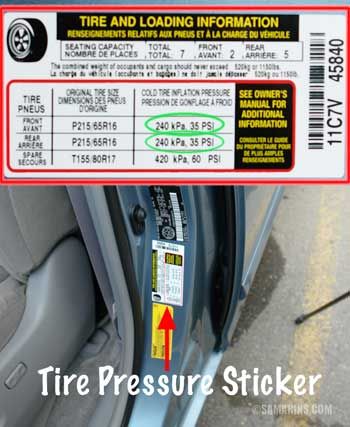 An overinflated wheel clings to the surface only in the central part, which leads to its rapid wear. A poorly inflated tire, on the contrary, "sits" on the sidewalls, leaning on the shoulder areas of the tread and pushing the central part inward. Here's what it looks like:
An overinflated wheel clings to the surface only in the central part, which leads to its rapid wear. A poorly inflated tire, on the contrary, "sits" on the sidewalls, leaning on the shoulder areas of the tread and pushing the central part inward. Here's what it looks like:
Both under-inflation and over-inflation in tires create many problems for the driver.
1. Increased wear of the central part of the tire tread.
2. Reduced ride comfort, hardness of potholes and road bumps.
3. Increased load on the car's suspension due to reduced tire damping effect.
4. Risk of tire damage and herniation due to shock loading (getting into a pit or pothole).
5. Reduced control stability due to reduced contact patch.
1. Increased wear of the tread sidewalls (shoulder areas).
2. Severe deformation of the rubber when driving over bumps, which increases the risk of tire damage.
3. An increase in tire temperature, which threatens to delamination of the carcass and can lead to tire explosion at high speed.
4. Increased risk of hydroplaning on wet roads.
5. Risk of tire breaking.
6. Increased fuel consumption.
Reduced pressure hits the driver's pocket hard: a pressure drop of 20% (which is not uncommon: it is enough, for example, to deflate the wheels to 1.8 atmospheres instead of the manufacturer's prescribed 2.2) reduces tire life by 25-30% and increases fuel consumption fuel by 3%.
There is no universal tire pressure: it depends on the size of the tires, the characteristics of the car (primarily weight) and road conditions. Therefore, it is important to follow the factory recommendations, maintaining exactly the tire pressure that the engineers expected when designing the car.
The recommended pressure for your machine can be found in the operating instructions and on the sticker in the door frame.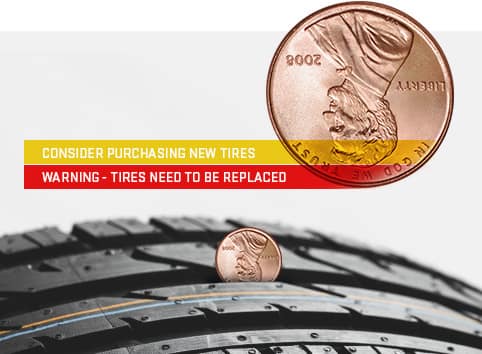 If, depending on the configuration, tires of several dimensions were installed on the car, then the pressure recommended for them may differ - look in the table for your exact wheel size. The manufacturer may prescribe an increase in tire pressure at the maximum load of the machine. For the spare tire (Spare tire), the required pressure is also indicated on a separate line - note that it is much higher than the standard one.
If, depending on the configuration, tires of several dimensions were installed on the car, then the pressure recommended for them may differ - look in the table for your exact wheel size. The manufacturer may prescribe an increase in tire pressure at the maximum load of the machine. For the spare tire (Spare tire), the required pressure is also indicated on a separate line - note that it is much higher than the standard one.
So, you have found the necessary pressure parameters, it remains to decipher them. In physics, pressure is measured in pascals, in real life - in anything: in bars, atmospheres, pounds-force, kilogram-force ... Drivers and tire workers usually use the term atmosphere, but such a unit is often absent on pressure gauges (pressure measuring devices) . Let's clear up this confusion.
Atmosphere is a non-systemic unit of measurement, approximately equal to atmospheric pressure on the surface of the Earth. Since it has become widely used, it was necessary to somehow equate it with correct physical units. For simplicity, one atmosphere is considered equal to one bar, one kilogram-force and one hundred kilopascals.
For simplicity, one atmosphere is considered equal to one bar, one kilogram-force and one hundred kilopascals.
In addition to the technical atmosphere (at), there is also the physical atmosphere (atm), which is slightly larger. Again, for convenience, they are considered equal. But all these assumptions introduce an error, so if you need accurate tire pressure, measure it correctly - in pascals or bars. Moreover, manufacturers usually indicate the pressure in these quantities.
Imperial pounds-force (aka PSI, “psy”), popular in the USA, is more difficult to translate, here you can’t do without a calculator. In the table, we have collected together all pressure units with exact values, and also approximately brought them to each other to simplify calculations:
| Pressure units | |||||
| Pascal | Bar | Technical atmosphere | Physical atmosphere | PSI | |
| 1 Pa | 1 N/m² | 10-5 | 10. | 9.8692•10-6 | 145.04•10-6 |
| 1 bar | 105 | 1x106 dynes/cm² | 1.0197 | 0.98692 | 14.504 |
| 1 at | 98066.5 | 0.980665 | 1 kgf/cm² | 0.96784 | 14.223 |
| 1 bar | 101325 | 1.01325 | 1.033 | 1 bar | 14. |
| 1psi | 6894.76 | 68.948•10-3 | 70.307•10-3 | 68.046•10-3 | 1lbf/in² |
It is advisable to check tire pressure daily, before driving. But this is only possible with a very measured rhythm of life. In reality, checking at least once a month is already an excellent indicator for the average driver. But before traveling a long distance, checking the pressure and visual inspection of tires and rims should be done in any case.
It is necessary to measure the pressure in cold tires, that is, before driving. During driving, the tires heat up, which increases the pressure by about 10%. Therefore, never release supposedly excess air from hot tires: after cooling, the pressure will be below normal. If you had to inflate a hot tire during a trip, inflate it 10% more than the nominal value, and check the pressure again when the wheels have cooled down - no earlier than 3 hours after stopping.
If you had to inflate a hot tire during a trip, inflate it 10% more than the nominal value, and check the pressure again when the wheels have cooled down - no earlier than 3 hours after stopping.
Always check the pressure in all tires. Different tire pressures seriously affect handling and can cause the car to pull to the side. Do not forget about the "spare tire": it should always be inflated in case of an unexpected wheel change on the road.
For long-term driving at high speeds (more than 160 km/h), car manufacturers advise increasing tire pressure by 0.2-0.4 bar from the recommended value. This will slightly improve the handling of the car, although it will negatively affect comfort. But such advice is relevant for driving on high-speed autobahns, and not for everyday urban use, especially in Russia.
Before a long trip on a dirt road or a road with a muddy surface (mud, snow), it is reasonable, on the contrary, to reduce the pressure in the tires - this will improve the grip.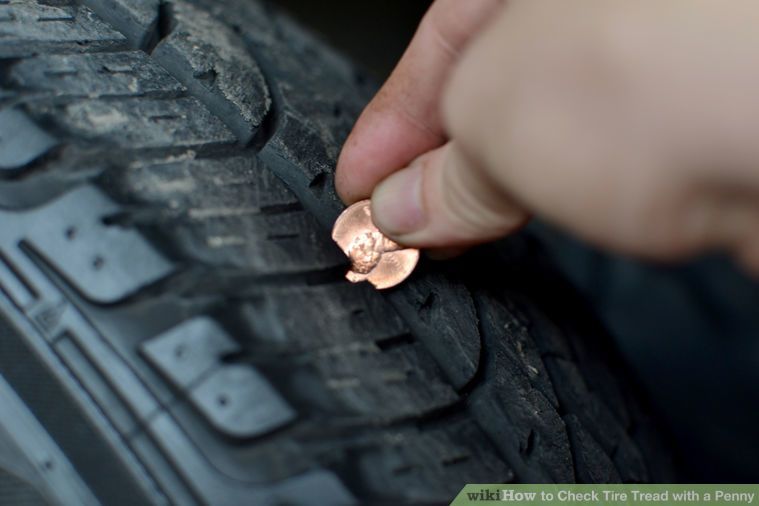 In summer, it is worth limiting yourself to reducing pressure by 5-10% of the nominal value, and in winter - by 10-15%.
In summer, it is worth limiting yourself to reducing pressure by 5-10% of the nominal value, and in winter - by 10-15%.
The pressure in low-profile tires (especially non-standard sizes) must be monitored especially carefully. Low profile tires have two features: a low sidewall (profile) height and a large rim diameter. If the tire has the correct air pressure, only the tread is in contact with the road. Low pressure causes the sidewall of the tire to bend, causing it to touch the roadway and wear out quickly, up to complete abrasion. And punching a low-profile tire in a pit at low pressure is much easier.
When inflating low profile tires, you need to focus on the pressure indicated for a full load of the machine and the maximum allowable pressure for a particular tire. It is indicated on the sidewall, next to the inscription max pressure, in one of the accepted units of measurement: kilopascals (KPA), bars (BAR) or pounds-force (PSI).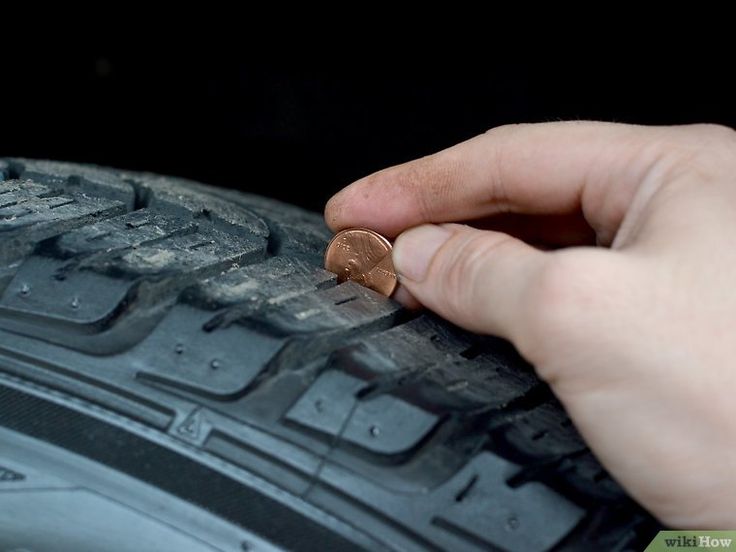
Modern cars equipped with sensors in tires and a TPMS (Tire pressure monitoring system) pressure monitoring system themselves monitor the pressure in each wheel and signal deviations, which is very convenient. If there is no such system in the car from the factory, you can install it yourself.
But the old manual measurement methods are still in use. Firstly, any modern car compressor is equipped with a pressure gauge: by inflating the wheel, you immediately control the pressure.
Secondly, there are compact hand-held pressure gauges: no need to unpack and connect the pump to check the pressure, and the measurement accuracy of such a pressure gauge is usually higher than that of a built-in compressor instrument. There are also modern digital pressure gauges on sale that allow you to switch pressure units on the fly and save readings in memory, which is very convenient.
Finally, if you want to entrust all maintenance of the car to professionals, you can use the services of tire fitting. In Hyperauto car services equipped with tire fitting areas, experienced mechanics will accurately measure and correct tire pressure, assess the condition of the tire tread and perform any other work with the wheels.
In Hyperauto car services equipped with tire fitting areas, experienced mechanics will accurately measure and correct tire pressure, assess the condition of the tire tread and perform any other work with the wheels.
20.01.2022
Tires experience the greatest load in the car and constant contact with the road surface, which leads to their rapid tire wear. To extend the life of the rubber and at the same time ensure the safety of movement by car will allow maintaining the optimal pressure in the wheels, which can change under the influence of various factors. That is why, the question of how often to check tire pressure and how to do it correctly worries many car owners.
Regardless of the tightness of the tires, their pressure is reduced by 0.7 bar every month, even under ideal conditions. Inadequate pressure to the level recommended by the manufacturer not only shortens the life of the rubber, but also has more negative consequences.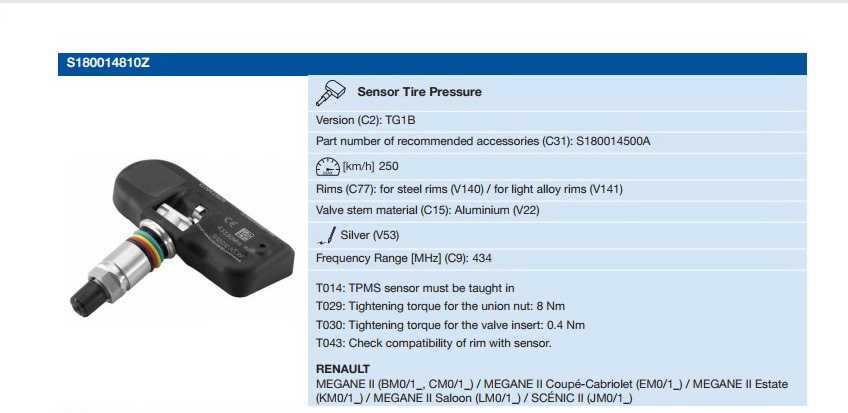 An excess or deficiency of this indicator is the cause of:
An excess or deficiency of this indicator is the cause of:
This can be avoided by checking the pressure in the car's tires at least once a month. It is also recommended to check the pressure level before and after long trips. For each car, the manufacturer indicates its requirements for this indicator, which is indicated on a special plate located near the driver's door, on the fuel tank or elsewhere, depending on the brand of the car.
It is possible to determine the deviation of pressure from the normal level of this indicator, according to certain criteria. With insufficient pressure, the wheels begin to make a whistling sound during the entry into a turn, even at low speed, and when cornering at high speed, the flat tires “break down”.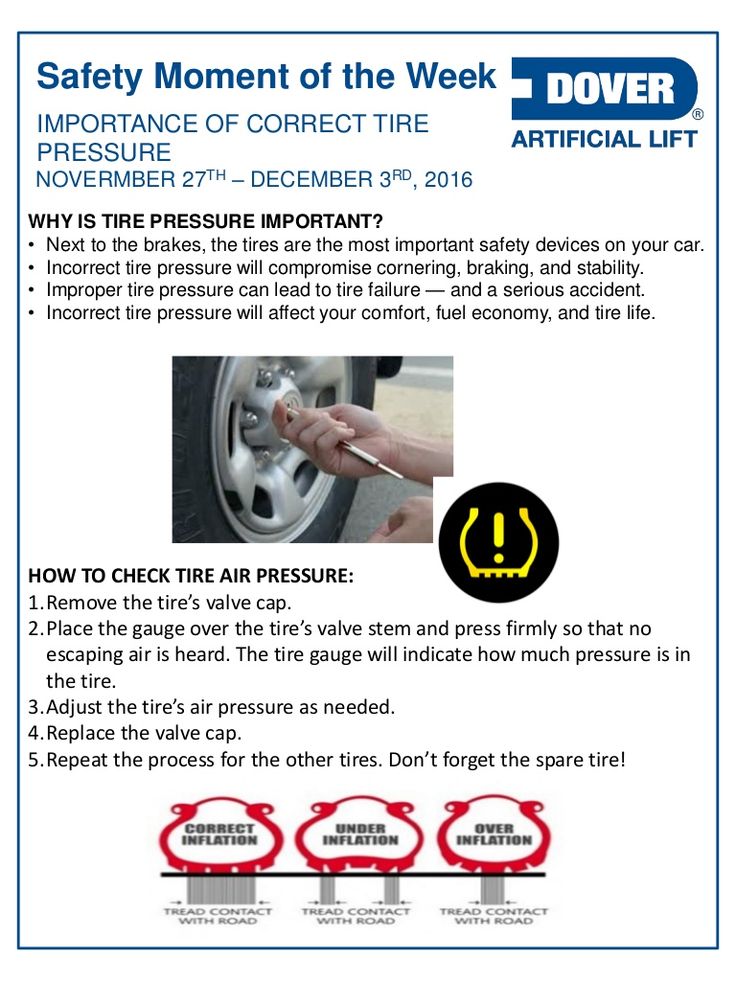 If the lack of pressure is observed only on one wheel, then the car begins to pull to the side.
If the lack of pressure is observed only on one wheel, then the car begins to pull to the side.
Inflated tires tend to have a sharp response to vehicle handling and terrain features, even when driving in a straight line. The car shakes noticeably on bumps and the side edge of the tire is more pronounced when entering a turn. In addition, with excessive pressure, the car rolls well on both flat and uneven surfaces.
The most common, convenient, and accurate method of measuring pressure is with a pressure gauge built into an air compressor. It can be found at service stations or specialized gas stations, or you can purchase a portable device for personal use at an auto shop. Depending on the version, there are three types of such equipment on the market:

In addition, there is an alternative to pressure gauges on the market - special electronic sensors made in the form of caps. They constantly determine the level of pressure in the tire and allow you to control the degree of inflation without additional equipment. Sensors with a transparent upper part are installed on each nipple. Depending on the pressure indicator, the transparent part is painted in a certain color:
The most accurate solution is offered by the Tire Pressure Monitor System (TPMS), which is already installed on many modern cars in factory conveyor conditions. In this case, the electronics independently determines the change in tire pressure and notifies about it using the on-board computer. Today TPMS is represented by several types:
 Based on these ratios, the system determines the pressure level and detects the problem, which alerts the driver, but without transmitting accurate data.
Based on these ratios, the system determines the pressure level and detects the problem, which alerts the driver, but without transmitting accurate data. The main mistake that car owners make is to measure the air pressure in the tires after a long trip or after the car has stood in the sun for a long time. To get up-to-date data, check the tire pressure when the tires are cold. The best time for this is the morning hours. If the car has driven several tens of kilometers or stood in the heat, the results will not be correct.
The level determination process itself is carried out as follows:

If the pressure level deviates up or down, it is necessary to correct this indicator by dropping or increasing the amount of air in the wheels and reinstalling the cap on the air valve.
This procedure must be carried out in each case for all four tires. With regular changes in pressure, it is necessary to have the wheels checked by a professional workshop.
Different units are used to measure pressure. In Russia, this indicator is determined in bars (bar) and atmospheres (kg / cm²). Both measurement options are used as synonyms, since they are almost identical to each other: 0.9869 atm=1 bar.
For foreign models, this parameter is determined by the ratio of pounds per square inch and is indicated by "psi", which differs from the bar value: 1 bar = 14.5 psi. Due to the difference in values and the need to calculate the rate using formulas, many manufacturers indicate the optimal pressure in several units at a time. In other cases, you can use the standard table of unit ratios for the most common values:
In other cases, you can use the standard table of unit ratios for the most common values:
| bar | 2 | 2.2 | 2.5 | 2.7 | 2.9 |
| psi | 29 | 32 | 36 | 39 | 42 |
Anyone, even a novice driver, knows that tire pressure directly depends on the ambient temperature. When it gets cold, it drops, and during hot weather, on the contrary, it rises. As practice shows, deviations from the norm are observed even if the temperature fluctuates between 7–9 degrees.
When using summer tires in the warm season, it is recommended to follow the manufacturer's recommendations, and when using it in autumn or winter, it is necessary to add about 0. 2 bar to these figures, since on average the wheel regularly bleeds air in the range from 0.07 to 0.14 bar.
2 bar to these figures, since on average the wheel regularly bleeds air in the range from 0.07 to 0.14 bar.
It is better to inflate outdoors, and not in a warm garage, since in this case the data will be incorrect and when the car leaves the open area, the tire pressure level will be lower than that which was inflated in the heat. In the summer, before checking and pumping, you should make sure that the car was not standing under the rays of the scorching sun.
When pumping air into the wheels in the summer, it is better to under-pump a little. This is due to the fact that during the heat the roadway also heats up, which increases the contact patch with the surface and, as a result, friction. These factors provoke heating of the air in the wheel, its expansion and an increase in the atmosphere under the tire up to 15%. In winter, a different picture is observed. In severe frost, after the car has left a warm room, there is a sharp compression of the air, so it is better to increase the pressure in the tires of the car in winter.